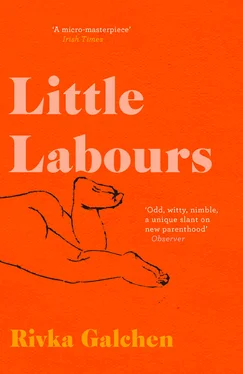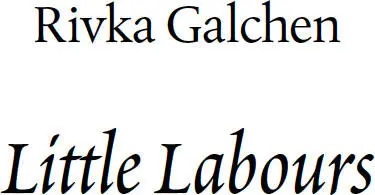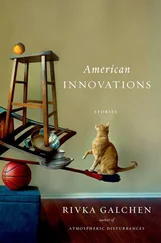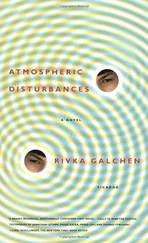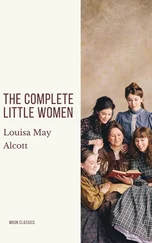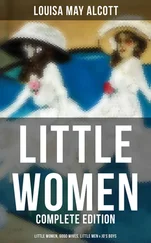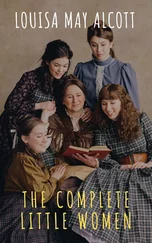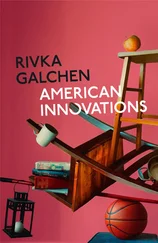
4th Estate
An imprint of HarperCollins Publishers
1 London Bridge Street
London SE1 9GF
www.4thEstate.co.uk
This eBook first published in Great Britain by 4th Estate in 2017
First published in the United States by New Directions in 2016
Copyright © Rivka Galchen 2016
Design by Erik Rieselbach
Cover design by Anna Morrison
Rivka Galchen asserts the moral right to be identified as the author of this work
“Notes on Some Twentieth-Century Writers” originally appeared in Harper’s Magazine .
A catalogue record for this book is available from the British Library
All rights reserved under International and Pan-American Copyright Conventions. By payment of the required fees, you have been granted the non-exclusive, non-transferable right to access and read the text of this e-book on-screen. No part of this text may be reproduced, transmitted, down-loaded, decompiled, reverse engineered, or stored in or introduced into any information storage and retrieval system, in any form or by any means, whether electronic or mechanical, now known or hereinafter invented, without the express written permission of HarperCollins
Source ISBN: 9780008225186
Ebook Edition © October 2016 ISBN: 9780008225193
Version: 2019-02-04
Contents
Cover
Title Page
Copyright
Children’s books
The crystal child
A long, long time ago, in late August
A reason to apologize to friends
What drug is a baby?
Dynasty
Cargo cult
Mysteries of taste
Cravings
Religious aspects of the baby
Head shape
The romantic comedy
Wiped out
The species
Literature has more dogs than babies
More Frankenstein
And movies
Princess Kaguya
Rumpelstiltskin
How the puma affects others, one
How the puma affects others, two
Notes on some twentieth-century writers
Other people’s babies
Other people’s babies, two
Other people’s babies, three
Other people’s babies, four
Reversals
Mother writers
When the baby came home
When the empress moved
Screens
iPhone footage
Lots of writers have children
In Flagstaff, one
In Flagstaff, two
New variety of depression
A baby is an ideal vector for a revenge plot
A modern anxiety
Things that one was misleadingly told were a big part of having a baby
Babies in art
Video games
Orange
More babies in art
Sometimes it can seem like many hours with a baby
Stranger danger
How the puma affects others, three
Most of the great women writers of the twentieth century
Women writers
Baby girls and men
A friend who is not a close friend
I never
A Doll’s House
People who get along well with babies
The beginning of misunderstanding
A new citizen
Money and babies
Keep Reading …
About the Publisher
Books for young children rarely feature children. They feature animals, or monsters, or, occasionally, children behaving like animals or monsters. Books for adults almost invariably feature adults.
My mother tells me that people tell her, when she is out with the baby, that the baby is a crystal child. Some people ask for permission to touch the baby, because contact with crystal children is healing. “You should research what it is, crystal children,” my mother, who has a master’s degree in computer science and an undergraduate degree in mathematics, says more than once. From the moment my mother first met the baby, she found her to be an exceptional and superior creature; her ascribing of crystal child qualities to the baby is part of this ongoing story.
I finally go ahead and research crystal children. On the Web. I learn that, unlike rainbow children, crystal children have a difficult time because they believe they can change the way people think in order to heal the world; rainbow children by contrast understand that people cannot be changed, they can only be loved as they are; rainbow children are therefore less frustrated than crystal children. Crystal children were born, one site explains, mostly in the nineties, whereas rainbow children arrived, by and large, in the new millennium—prior to the generation of crystal children there was a generation of indigo children—and so maybe the puma is in fact a rainbow child, rather than a crystal child, or maybe she is part of an even newer generation, as yet uneponymized.
Maybe in the same way that children in the Middle Ages who were born with congenital hypothyroidism (as was common before salt was iodized because iodine is essential to thyroid development) had a certain look, and were mentally different from the mainstream, and were referred to as chrétiens —a term which unfortunately over time became cretins though all it meant at the time was Christians—crystal and rainbow and indigo children are terms used mostly if not prescriptively to refer to children who are unusual in ways most commonly associated with autism or Down’s syndrome.
Somehow I begin to believe in crystal children, and in the idea that my child has the special healing powers ascribed to crystal children. I start to believe this even though, unlike my mother, I don’t have a master’s degree in computer science, or an undergraduate degree in math. When I read one day that Isidor of Seville, back in the seventh century, was already saying that the world was round, he somehow knew so intuitively, I decide this is relevant.
But I still don’t understand why no one has ever stopped me on the street to talk about crystal children, why they have only stopped my mother. And I don’t understand why my mother, usually so suspicious of any comments made by “others,” is so open to these comments. Someone important to me says, “It sounds like a way to love and value children who are difficult.” Sure, I say, that sounds true. “Maybe your mother is telling you that she is a crystal child. Or that you are.”
A long, long time ago, in late August
In late August a baby was born, or, as it seemed to me, a puma moved into my apartment, a near-mute force, and then I noticed it was December, and a movie was coming out on what is sometimes called the day of the birth of our savior. If one was to accord respect to the tetraptych poster campaign, Forty-Seven Ronin featured one Keanu Reeves, one robot, one monster, and one young woman dressed in green and, for unclear reasons, upside-down. The poster I kept seeing was at the end of my block, below a dance studio, around the corner from a deli next door to a Japanese clothing shop that specializes in looks inspired by American streetwear, and across the street from a dollar-a-slice pizza place perennially playing Mexican pop music. I had melatonic madness at the time. Maybe for that reason the poster, as I passed it four or five times a day, always with the puma, began to seem to really mean something, something more than what was manifest. I felt this even though I knew the poster would soon enough be replaced by one for Vampire Academy or the newest remake of Robocop , and in fact it felt almost as if that randomness-revealing replacement had already happened, as if that was part of the poster’s message, that the accumulation of tomorrows was not—however lost to time I might be—going to cease producing its predictable melancholy. (However I, and I registered this as rare, I was myself at the time
Читать дальше
